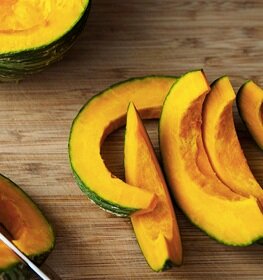The cool season is here, I have to admit it. Even with the current warmth brought by the latest Santa Ana winds (that my bones jump to absorb!), you can feel the change in the crisp cool of the evening air. I’ve been grappling with my ritual conflicting feelings with this yearly season change. I must fend off the blues that come with thinking that I won’t be running into the warm ocean waves for many moons. I counter those feelings by looking ahead at the beauty of the rains to come AND the yummy cool season veggies that remind me that even in the cold of winter, life flourishes. One of these cool season veggies that we grow and my kids love are pea shoots! And what better to do with pea shoots than a makeshift Pad Thai-inspired dish that uses lots of what we’ve got. I should mention, staples in our house are peanut butter, miso paste, rice noodles and tamarind paste. I use Aunt Patty’s Tamarind Paste, which I can usually find at Sprouts. I love it because I don’t have to spend a bunch of time picking seeds out. I should also mention that this is by no means meant to rival or replace the authentic pad thai dish that we all love so much! If you’re interested in some invaluable tips (including a few key ingredients to add to your shopping list) for making that at home, check out this Edible San Diego article by Chef Fern Tran on Master Thai Take Out Recipes at Home.
Ok here’s this week’s quick recipe—
Ingredients:
3 carrots, grated into long thin strips with a potato peeler
1 bunch green onions, chopped
4 cloves garlic, chopped
3 tbs tamarind sauce
1/2 cup soy sauce
1 tbs molasses or 4 tbs brown sugar and/or juice of 2 oranges (or some combination thereof depending on what’s around and the call of your sweet tooth…)
1 or 2 tbs peanut butter
1 heaping tbs miso paste
1 heaping tbs chile (again, use what you’ve got—dry or fresh, maybe chili paste or even Sriracha. I tend to grab the chiltepin for most chile-related matters)
1 or 2 boxes of tofu (depending on how many hungry mouths you’re feeding…my two kids are tofu-eating-monsters sometimes and could easily finish a whole box themselves)
1 package rice noodles (around 14 oz)
1 box pea shoots (or bean sprouts, of course, but I highly recommend the pea shoots here!)
cilantro (another cool season ‘weed’ once it’s established in your yard) if you’ve got it
1/2 bunch of kale (and/or cabbage), chopped into fine strips
1 cup peanuts (chopped or crushed)
lemon or lime to taste
Instructions:
Prepare rice noodles as directed on package, drain, toss with the tiniest bit of sesame oil and set aside.
In a sauce pan, stir fry green onions and garlic in a spoonful or two of sesame oil.
Add tofu and stir fry a bit more (the aim here is just to warm the tofu up)
Add tamarind paste, sweetener (this your choice blend of orange juice, molasses and/or brown sugar), soy sauce, peanut butter and chile (optional, if you want it all spicy—with kids, I keep the chile on the side so people can spice up their plate individually) and mix over heat for a couple of minutes. You probably want to add a little water here to make a nice thin sauce and get everything blended up, especially if you didn’t add the orange juice.
Turn off heat and add miso (this keeps the probiotic goodness of the miso alive)
Add rice noodles, pea shoots, kale, carrots and toss to coat
Top with chopped cilantro and peanuts and chile (if you didn’t add it in before) and a squeeze of lemon or lime
Enjoy!








